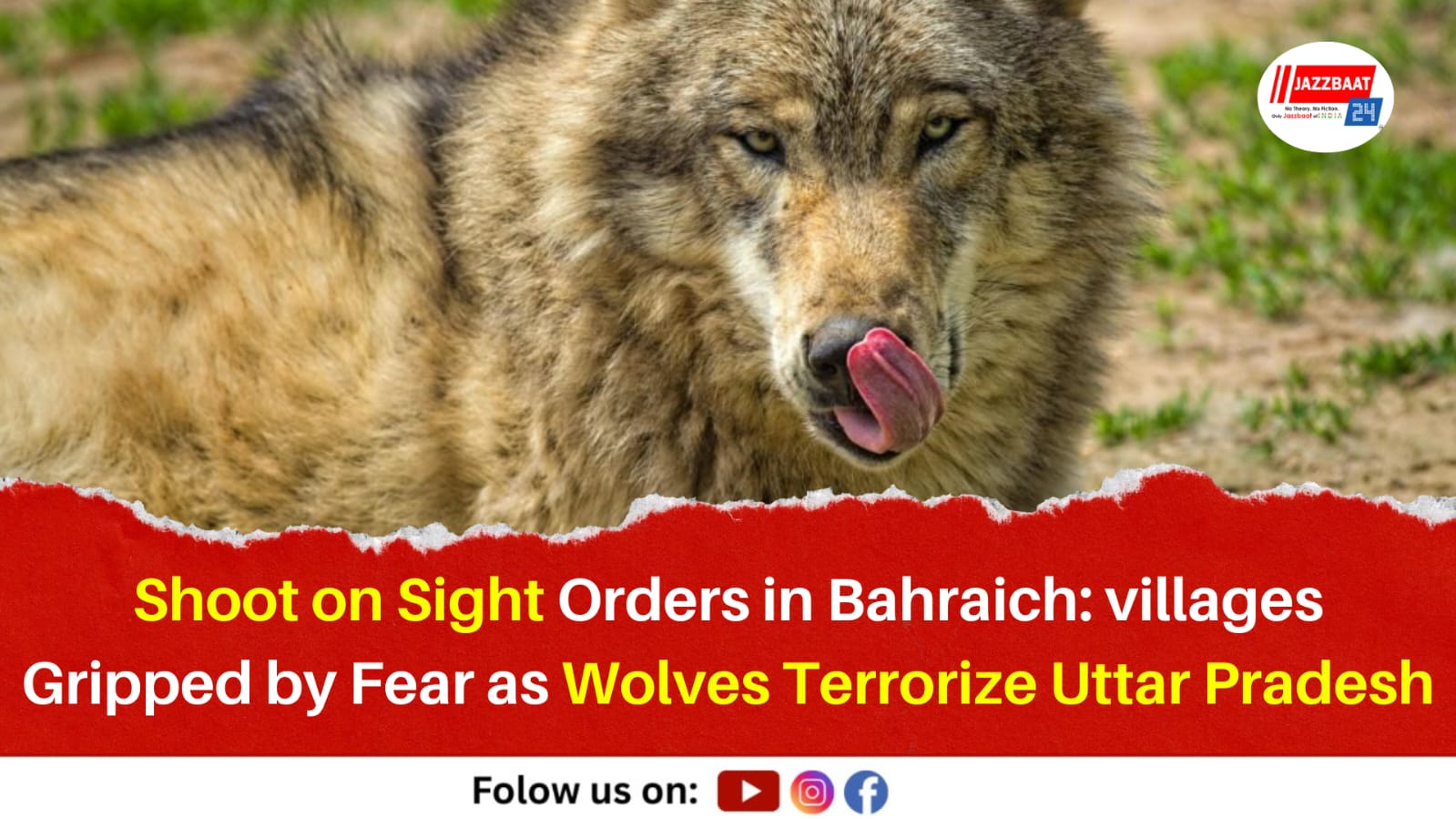The quiet farmlands of Bahraich, a district in eastern Uttar Pradesh, have turned into a zone of fear. Once known for its lush fields and peaceful villages, this region is now haunted by a string of brutal animal attacks. Over the past two months, at least six people including four children have been killed, and several others severely injured, by what officials believe to be wolves or wild canines.
In response, the state forest department has issued “shoot on sight” orders authorizing forest guards to kill any wild animal that poses a direct threat to human life. The decision, though aimed at ensuring safety, has sparked intense debate over animal protection and human wildlife conflict.
The first attacks began quietly, in the villages of Kaiserganj and Mahsi blocks. Villagers initially thought a leopard or tiger might be behind the killings, but soon realized the attack patterns were different. The creatures hunted alone, struck swiftly, and dragged away their victims behavior typical of wolves.
One of the most tragic incidents occurred in Tediya Kotia village. A seven-year-old child was playing in the courtyard at dusk when a wild creature lunged from the shadows and dragged him into the nearby forest. His body was found hours later a sight that the villagers say still haunts them.
Soon after, similar attacks were reported from Baharwa Naubasta, Jairampur, and other nearby villages. Fear spread rapidly. Farmers stopped venturing out after sunset; children refused to go to school. Some villagers began lighting bonfires at night to keep the predators away.
District Forest Officer Ram Singh Yadav stated, “Our top priority is to protect human life. The shoot-on-sight order is a necessary step, but it will be enforced only against animals that are proven threats. Regular wildlife will remain under protection.”
Special teams have been deployed in the affected areas. They are setting traps, patrolling at night, and warning villagers to remain indoors during dawn and dusk the hours when attacks are most likely.
However, a recent twist has added confusion to the crisis. A carcass recovered after one attack was initially thought to be that of a wolf but later tests revealed it was a jackal. This revelation has raised questions about the accuracy of the hunt and the risk of killing innocent wildlife.
Conservationists have voiced their concern. Wildlife expert Ramesh Chaturvedi remarked, “As human settlements expand, forests are shrinking. Wild animals are losing their natural habitats and entering villages in search of food. Killing them won’t solve the problem we must address the root cause.”
For the people of Bahraich, night has become synonymous with terror. Many villagers stay awake until dawn, keeping torches and sticks beside their beds. “We used to sit outside and talk after sunset,” said Kamla Devi, a resident of Baharwa Naubasta. “Now, we lock our doors and pray nothing comes from the darkness.”
The state’s Forest Minister Arun Kumar has assured financial assistance to the victims’ families and promised that the government is monitoring the situation closely. Officials have formed a special task force to track the animals and prevent further attacks.
Beyond the immediate tragedy, the Bahraich attacks reveal a deeper crisis the growing conflict between humans and nature. Once, these forests were home to wolves, jackals, deer, and wild boars. Now, farmlands, brick kilns, and settlements have eaten into their habitat. With food scarce, the predators have moved into villages and confrontation was inevitable.
Experts say that long term solutions are needed: wildlife corridors, safe zones, and public awareness. “Guns can’t solve this,” said one forest official. “Only coexistence can.”
As night falls again over Bahraich, the villagers light fires and whisper prayers. In the distance, a howl cuts through the wind part warning, part echo of fear. The authorities are on patrol, the forest guards are alert, but for the people, one question remains unanswered: When will this nightmare end?
